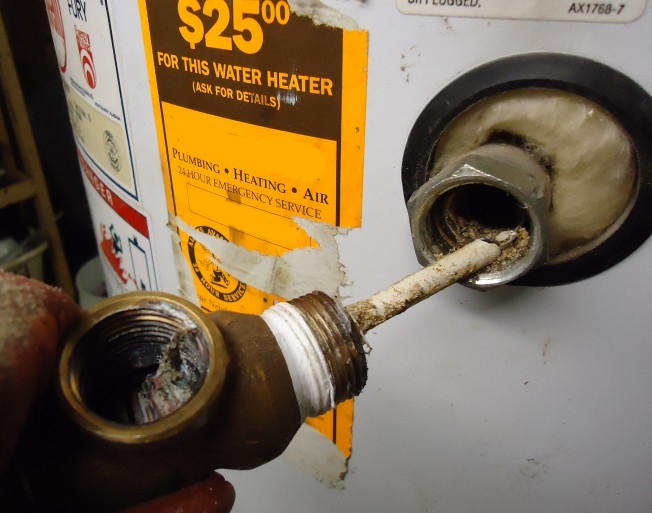Step-by-Step Guide to Caring for Your Home's Hot Water SystemMaintaining Your Home's Hot Water System: Key TipsWhat to Maintain Your Home's Hot Water System Properly
Step-by-Step Guide to Caring for Your Home's Hot Water SystemMaintaining Your Home's Hot Water System: Key TipsWhat to Maintain Your Home's Hot Water System Properly
Blog Article
How do you actually feel when it comes to How to Maintain Your Water Heater & Prolong its Life?

Hot water is necessary for daily comfort, whether it's for a rejuvenating shower or cleaning dishes. To ensure your warm water system runs efficiently and lasts longer, routine upkeep is vital. This short article supplies sensible tips and insights on exactly how to keep your home's warm water system to avoid interruptions and expensive fixings.
Introduction
Maintaining your home's hot water system may appear overwhelming, yet with a few simple steps, you can ensure it runs efficiently for several years ahead. This guide covers everything from comprehending your hot water system to do it yourself maintenance tips and knowing when to contact professional assistance.
Value of Keeping Your Warm Water System
Normal upkeep not just expands the lifespan of your hot water system but also ensures it operates efficiently. Overlooking maintenance can result in decreased efficiency, higher energy bills, and even premature failure of the system.
Signs Your Hot Water System Needs Maintenance
Knowing when your warm water system requires focus can protect against significant concerns. Keep an eye out for indications such as irregular water temperature, unusual noises from the heater, or rusty water.
Flushing the Hot Water Heater
Purging your water heater removes sediment build-up, boosting performance and extending its life.
Checking and Replacing Anode Rods
Anode rods protect against deterioration inside the container. Checking and replacing them when worn is essential.
Complex Concerns Calling For Expert Aid
Instances include major leaks, electric issues, or if your water heater is consistently underperforming.
Regular Expert Upkeep Conveniences
Expert upkeep can consist of thorough examinations, tune-ups, and guaranteeing conformity with security criteria.
Examining and Adjusting Temperature Level Setups
Changing the temperature level settings makes certain ideal efficiency and safety and security.
DIY Tips for Upkeep
You can perform a number of maintenance tasks on your own to keep your warm water system in top problem.
Looking for Leaks
Consistently inspect pipes and links for leaks, as these can cause water damage and higher costs.
Understanding Your Warm Water System
Prior to diving into upkeep jobs, it's useful to recognize the basic elements of your warm water system. Generally, this consists of the hot water heater itself, pipes, anode rods, and temperature level controls.
Monthly Maintenance Tasks
Normal monthly checks can help capture small issues before they intensify.
Examining Pressure Relief Valves
Examining the stress relief valve ensures it operates appropriately and avoids extreme stress build-up.
Insulating Pipes
Protecting warm water pipelines reduces heat loss and can save energy.
When to Call an Expert
While do it yourself maintenance is valuable, some issues require expert experience.
Verdict
Normal upkeep of your home's hot water system is important for effectiveness, durability, and price savings. By complying with these ideas and knowing when to seek expert aid, you can make certain a trusted supply of warm water without unanticipated interruptions.
How to Maintain an Instant Hot Water Heater
Before tinkering with your hot water heater, make sure that it’s not powered on. You also have to turn off the main circuit breaker and shut off the main gas line to prevent accidents. Also turn off the water valves connected to your unit to prevent water from flowing into and out of the appliance. 2. When you’re done, you have to detach the purge valves’ caps. These look like the letter “T” and are situated on either side of the water valves. Doing so will release any pressure that has accumulated inside the valves while at the same time avoid hot water from shooting out and burning your skin. 3. When the purge valves’ caps are removed, you have to connect your hosing lines to the valves. Your unit should have come with three hoses but if it didn’t, you can purchase these things from any hardware or home repair shops. You can also get them from retail stores that sell water heating systems. Read the user’s manual and follow it to complete this task properly. When the hosing lines are connected, open the purge port’s valves. 4. You should never use harsh chemical cleaners or solutions when cleaning your unit. Make use of white vinegar instead. It should be undiluted and you’ll probably use about 2 gallons. 5. Now flush your water heater. This task should probably take about 40 minutes. We can’t give you specific directions for this because the procedure is carried out depending on the type, model and brand of your heater. With that being said, refer to the user’s manual. 6. When you’re done draining the unit, you have to turn off the purge port valves again. Remove the hosing lines that you earlier installed on each of the water valves. Put the valve caps (purge port) back in their respective places and be very careful so as not to damage the rubber discs that are found inside these caps. 7. Now that everything’s back in place, check your user’s manual again to find out how to reactivate your water heating system. 8. Once it is working, turn one of your hot water faucets on just to let air pass through the heater’s water supply pipes. Leave the tap on until water flows smoothly out of it. https://www.orrplumbing.com/blog/2014/september/how-to-maintain-an-instant-hot-water-heater/

I was shown that editorial about Tips on Maintaining a Water Heater through an acquaintance on another web blog. Loved our blog entry? Please quickly share it. Help another person check it out. Thank you so much for going through it.
Click Here Report this page